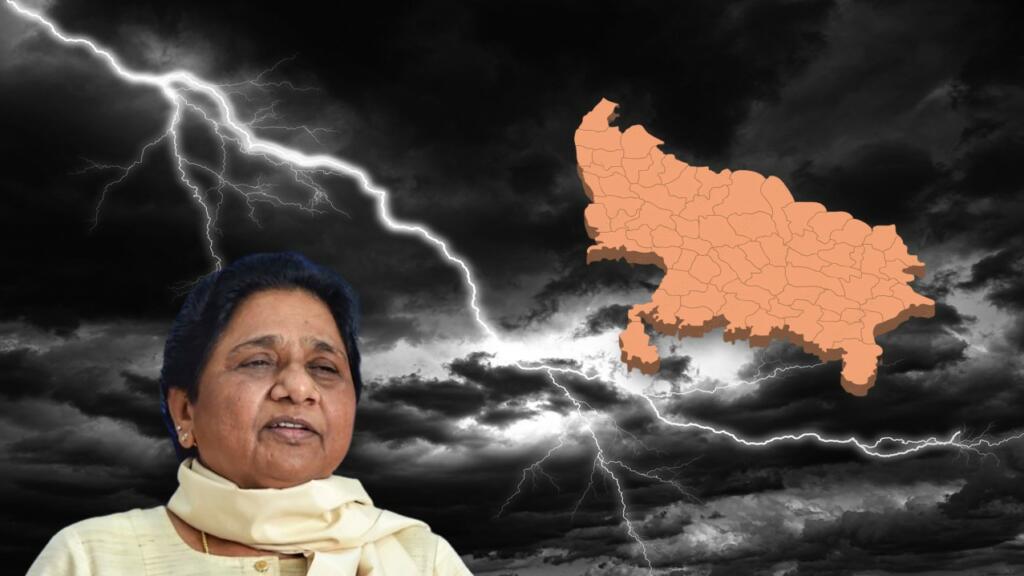Mayawati’s Bahujan Samaj Party that once shone blue in the state of Uttar Pradesh, has been relegated to margins. BSP has managed to win just a solitary seat in 2022 assembly elections and the analytics suggest even the traditional Jatav vote bank of BSP has abandoned Mayawati.
Read More: Once a kingmaker, now a nobody; the woeful journey of Bahan Mayawati
Mayawati: The politics of Kanshi Ram
Kanshi Ram introduced the ‘politics of dalits’. He even floated a party with the same agenda of social reform, and Bahujan Samaj Party came into existence. Leading the party floated by Kanshi Ram in 1984, Mayawati became the chief minister of Uttar Pradesh for the first time in 1995.
However, Mayawati was etched in the annals of history in 2007, when she brought the Brahmins, Dalits and Muslims together through social engineering and grabbed the power.
The social movement initiated to improve the status of backwards, slowly gained statewide recognition with Mayawati’s efforts. She allied with pan India parties and made her presence felt.
Also Read: Mayawati’s Gurjar controversy will benefit the BJP
The rise and fall of Mayawati
Mayawati stepped up the ladder as a tall Dalit leader. A teacher turned activist turned politician Mayawati became a role model for many especially the backward community.
She can be credited for aligning ‘Dalit Politics’ with the mainstream. She named cities after Dalit icons and was famous for erecting statues. She often faced backlash from her opponents for the same.
But the hard-gained acceptability slowly started fading away and today her party is on the verge of getting wiped out of the state.
After being at the centre of UP’s power matrix, Mayawati lost to Akhilesh Yadav in 2012. Mayawati did not care much then, saying that she was ok with power shuffling between Samajwadi Party and BSP.
Read More: 2022 UP elections will mark the end of Mayawati as a tall Dalit leader
The downfall had started way before but it came to public notice when Mayawati’s BSP drew a blank in the 2014 Parliamentary elections. The party again faced the heat in 2017, with BJP’s massive victory.
In 2019, Mayawati joined hands with her opponent Samajwadi Party, just to stay relevant. The alliance was a major failure.
Yet, some believed that Mayawati has a firm hold on her core Jatav voter base and the party will perform well in regional elections.
Mayawati’s BSP scores a solitary seat
Mayawati did work hard to reclaim her stature, in 2014, 2017 and 2019 as well. But the voters of Uttar Pradesh disappointed her. Maybe due to this disappointment, Mayawati did not oversee the ground preparations.
Mayawati’s BSP won 19 seats out of 403 seats it contested in 2017. But it still had a 22% vote share which was constrained to just 12% in this election.
Mayawati’s BSP scored just a single seat with the help of its lustreless campaign. The national party BSP fighting on all the constituencies in the state just won Rasara seat in Ballia district where its sitting MLA Umashankar Singh registered victory. The Brahmin-Dalit Ekta myth propagated by BSP leader Satish Chandra Mishra was shattered. The figures establish one major fact i.e., how the core Dalit votes have drifted away from Mayawati.
Even the Dalits have abandoned Mayawati
Dalits comprise about 21% of the electorate in Uttar Pradesh, as per data. And Mayawati’s own sub-caste Jatavs, which have been a core voter base of the Bahujan Samaj Party has been drifting away from the party.
79% of the Jatavs voted for the BSP in 2002, this rose to 86% in 2007, but fell to 62% in 2012, as Mayawati failed to deliver what was promised.
The non-Jatav Dalits have already shifted towards the BJP, giving it an edge in Uttar Pradesh in 2017. There has been a constant decline in non-Jatav votes from 53% in 2002 to 43% in 2017.
The voting bloc left for the Mayawati were Jatav Dalits, but the data suggests they have been too drifting away from the BSP and developing a lineage towards the BJP.
